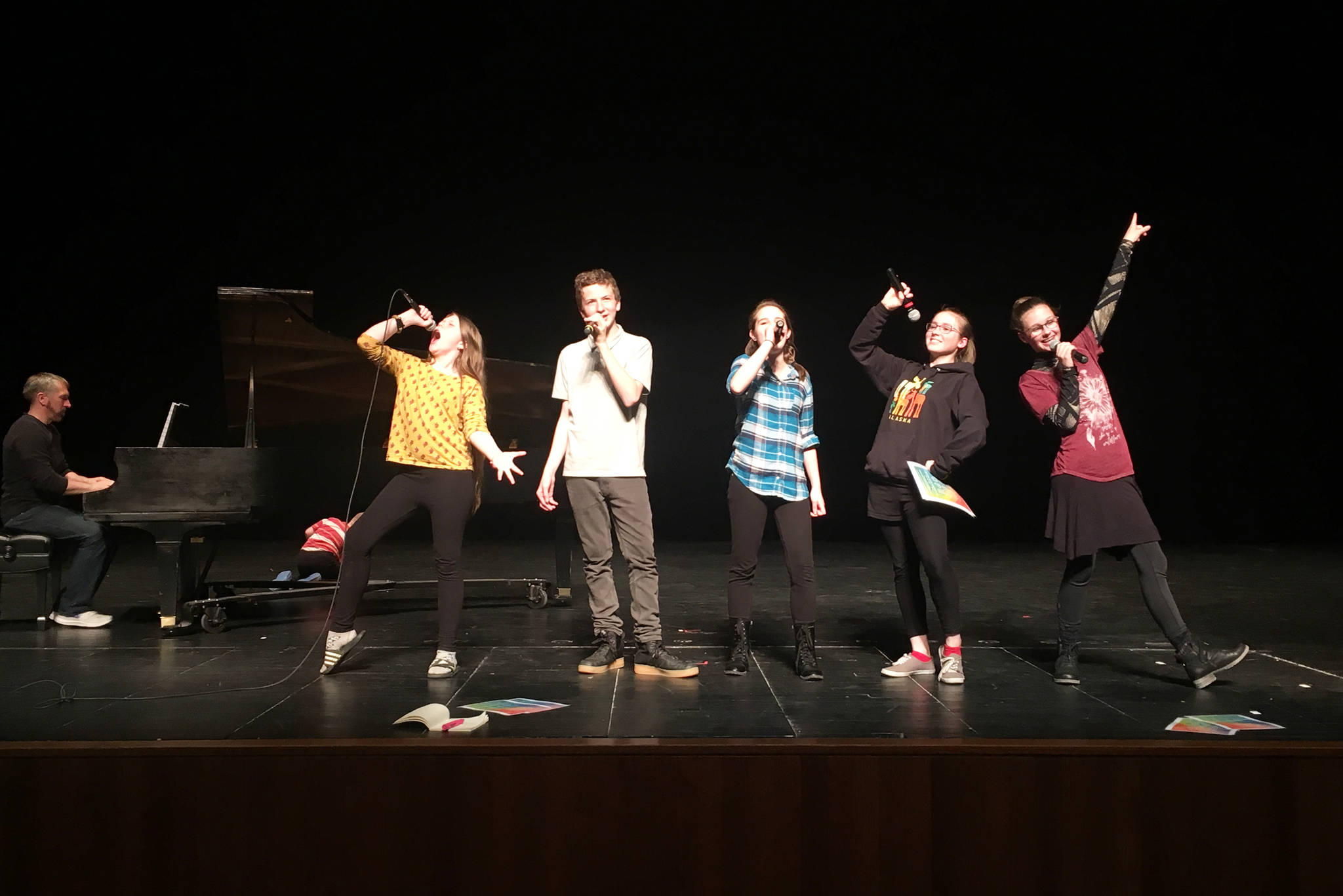With the cancellation this year of the annual Jubilee performing arts show in February, a new youth program came about to fill in the void. Last Friday at the Mariner Theatre, youth artists showed their talents in “Kaleidoscope,” a show sponsored by the Kaleidoscope Youth Arts Foundation.
Founded by arts parents Keri-Ann Baker, Rachel Barton and Britny Bradshaw, one intention the foundation looked for in “Kaleidoscope” was an opportunity for an adjudicated talent show. Their website indicates several additional dimensions based around encouraging opportunities and connections for youth in the arts to engage them further into the practices that inspire them.
“This is the kids’ show, and we would rather focus on what they have to share with the community than what inspired Kaleidoscope to get started,” Barton said.
The set of skills at last Friday’s performance ranged from 7-year-old Janaya Gao, who played both piano and violin, to graduating senior Emerald Miller, who showed her talent with five other young women in a jazzy and upbeat dance piece titled “La Habana.”
The performance opened with two student emcees, William Bradshaw and Regan Baker, followed by several others throughout the event. They introduced the show and expressed to the audience some of the deeper dimensions of what “kaleidoscope” means: a toy with mirrors and colored pieces that makes super cool reflections when you turn it. The word comes from the Greek words “kalos,” beautiful, and “eidos, form.
Between established acts, performers introduced the pieces with commentary on many of the positive features of participating in the arts, both individually and as a community. At one point, a narrator mentioned the role of music as a tool for communication and how it provides a way of sharing time and space in a meaningful way and communicating values beyond the confines of language. With music, sound and dance, one can witness expressions, interpretations and the experiences of another human being particularly in the nebulous dimensions of emotion and sentiment. It is a genre of human connection beyond oral expression.
Hannah Heimbuch composed the script for the emcees, and presented a balance between thoughtful and solemn commentary about the value and benefits that arts contribute and also more humorous, casual elements. For example: why are moose such bad dancers? Because they have two left feet. Or, why did Mozart sell his chickens? Because they kept saying “Bach, Bach, Bach.” The artistic director for the show was Lindsey Schneider.
Though diverse in performance, the show presented an undercurrent of piano scores, at times including vocalization or accompaniment to other instruments, but in several cases, solo piano. Various string instruments were performed. One of the youngest artists was Lila Shavelson, 6, who performed “French Folk Song” on cello. There were several violin pieces. Jessica Roper on guitar accompanied singer Fiona Linegar in their duet of “Josephine.” One piece, “When I’m Gone,” with Thea James and Rebecca Trowbridge, included the use of cups and hand beats for percussion. The two performers kept their beat while concurrently singing and playing the piano.
Most of the physical pieces and dance in various styles were self-choreographed. Hannah Vance presented one solo piece that filled the stage with spinning energy and spirited light; Vance also arranged the previously mentioned “La Habana.” Reilly Sue Baker and Katie Clark choreographed Baker’s dramatic “Runaway” that showed sensations of loss and searching. Ireland Styvar presented an array of talents in many of the pieces both vocally and physically. Her solo, “Sail” — suitably titled for her spins and twirls high off the ground in aerial silks — was also self-designed.
As an example of stretching the boundaries of physical movement, the show included a martial arts segment. This dimension of concise movement practice provided the audience a chance to observe vibrant and encouraging collaboration. In “Kaleidoscope,” Ethan and Evan Pietsch performed a concise karate duet, displaying discipline, practice and dedication. Their movement was crisp and it aligned with the stage dynamics of a very linear and angular choreography.
Finally, there were two choir components, incorporating the diverse, shared vocal talents of many local youth. In the first act, the audience welcomed the 18-member Homer Children’s Choir, most of whom also presented in all the other venues of the show. The smaller Harbor School Singers presenting the finale, “This is Me,” which closed the show with brave, confident lyrics to welcome the performers back to stage for final bows.
For more information on the Kaleidiscope Youth Arts Foundation, visit www.kaleidoscopearts.org.
Emilie Springer is a freelance writer living in Homer.


